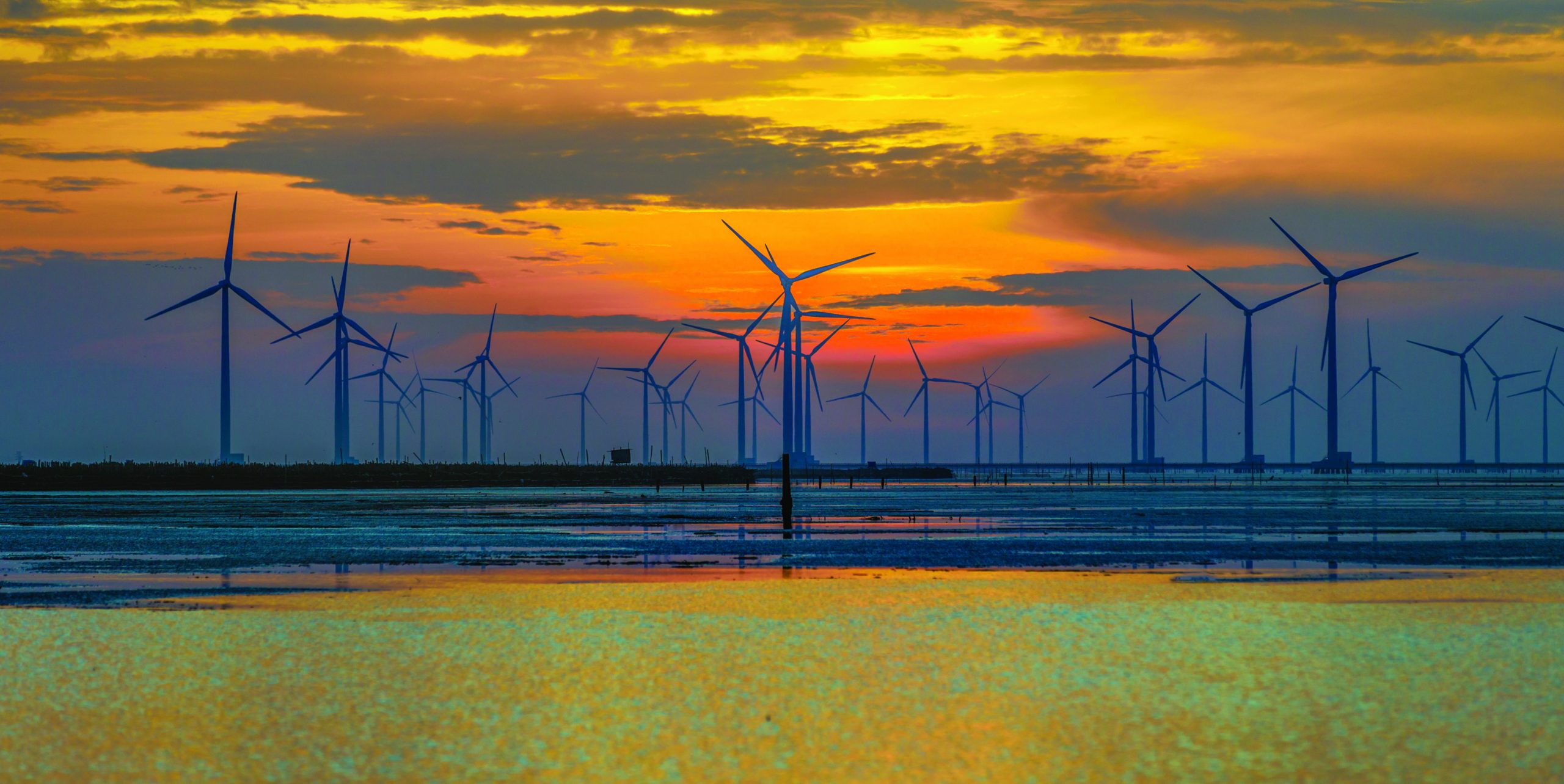Offshore wind turbines and wind-power plants are getting bigger every year, a trend that already helps offshore wind reduce costs all over the world. But while recent research suggests that costs will continue to dip as wind turbines and plants get bigger, the amount of these potential savings and whether there’s a maximum size where costs plateau remains unclear.
Now, in a recent study published in Applied Energy, researchers from NREL conducted one of the most comprehensive analyses currently available of the average cost per megawatt-hour to develop and maintain offshore wind-power plants and how those costs could change if current trends toward larger plants and turbines continue.
To do that, the team combined three models and found that larger wind turbines and power plant projects alone can reduce a plant’s average total cost per megawatt-hour over its lifetime (also known as LCOE) by more than 23 percent relative to the average fixed-bottom offshore wind power plant installed in 2019.
“We expected to see the costs decrease,” said Matt Shields, an NREL researcher who leads the lab’s work on techno-economic analysis of offshore wind energy and headed the study. “But I was a little surprised about the magnitude. That’s really a game changer.”

Investment Confidence
The team’s data provides a valuable touchstone. Now, the growing offshore wind industry can more confidently invest in the supply chain needed to build bigger turbines and larger projects — a chain that is not yet sufficient to achieve the Biden administration’s goal of deploying 30 GW of offshore wind energy by 2030.
The study was funded by WETO and coauthored by NREL researchers Philipp Beiter, Jake Nunemaker, Aubryn Cooperman, and Patrick Duffy.
Offshore wind-energy plants are part of a complex supply chain in which manufacturers design various parts, expert laborers make and assemble these parts at multiple ports, and specialized vessels transport the turbines offshore for installation. Every link in this chain comes with a cost that changes based on project and technology size and type. And, once the wind turbines are installed, O&M costs vary, too. But these costs don’t necessarily increase with size.
Reducing Costs
For example, a power plant that upgrades to larger wind turbines will need fewer machines to generate the same amount of energy. Fewer turbines mean fewer installation vessel trips and less overall maintenance. Both reduce costs. And yet, because larger wind turbines and power plants often need bigger foundations and more cables to transfer energy back to shore, they cost more money up front. These conflicting cost trends make it hard to determine how wind-turbine and power-plant upsizing affect total cost and energy output.
To see if bigger really is better, Shields and his team blended three models for:
- Balance-of-system costs (i.e., all capital costs — for foundations, cables, and installation — except for the wind turbine).
- O&M costs.
- Annual energy production.
NREL researchers designed two of the models — the open-source Offshore Renewables Balance-of-system Installation Tool (ORBIT) and the FLOw Redirection and Induction in Steady State (FLORIS) tools. To evaluate operation and maintenance costs, the team used the commercial Shoreline O&M Design model.
Then, the researchers used the models to compare the cost of a representative 2019 fixed-bottom offshore wind-power plant, which used 100 6-MW wind turbines for a total capacity of 600 MW, with various wind turbine and power plant sizes — up to a maximum of 20-MW wind turbines with a plant capacity of 2,500 MW. The models showed that scaling up both wind-turbine and power-plant size can reduce balance-of-system and maintenance costs through economies of scale (e.g., spreading export cable costs over larger projects) while reducing losses from wakes. Wakes, turbine-made turbulence that can decrease power production of downstream turbines, decline as turbines are spaced farther apart in larger and larger wind plants.

More Research Needed
Combined, these savings can add up to more than 23 percent. Still, more research is needed to achieve these savings, determine whether and how this reduction applies to floating offshore wind-power plants, and learn whether the “bigger is better” tenet has a limit. Cost savings could plateau at a maximum wind-turbine or power-plant size.
Right now, the wind industry can’t achieve that 23 percent. No manufacturer can build a 20-MW wind turbine — yet. And even when they can, the rest of the supply chain will need to catch up, too. For example, today’s vessels and ports are designed to install wind turbines of 12 MW or less.
Shields and his team plan to take a closer look at how innovations in technology and the supply chain might help further reduce costs in the future. In the meantime, they are working on creating a supply chain road map to find missing links.
“We need to jump-start the domestic supply chain as quickly as possible to minimize project risks, make projects even cheaper, create local jobs, and grow a more sustainable industry,” Shields said. “We want to build offshore wind-power plants to reduce our carbon footprint, and we can do it in such a way that we are positively impacting local economies.”
The supply chain must grow — quickly — to meet the 30-GW-by-2030 goal. And this study can help each link plan for a bigger future. “That’s going to be a huge challenge for us over the next decade,” Shields said. “But it’s one that’s worth investing in.”



























